Since its June 2024 WWDC conference, Apple is gradually rolling out its highly-anticipated Apple Intelligence features in intermediary versions of iOS 18.
As we all prepare for this big update, this article goes in-depth into what Apple has in stock for us, how Apple Intelligence will change everything once again and how you can expect to leverage Batch to navigate these major changes seamlessly.
While the expected Apple Intelligence release is much broader in scope, today we focus specifically on changes that will affect the end-user experience, impact, and conversion rates of two core customer engagement channels widely in use amongst our customers: Mobile Push Notifications and Email Marketing.
Keep in mind that the following is an early exploration of features that will ship to the general public later this year.
Apple Intelligence
But first off, what is Apple Intelligence?
Apple Intelligence is the marketing name of a suite of features leveraging LLMs—large language models—and other machine learning algorithms we’ve all come to commonly refer to as Artificial Intelligence.
Rather than a specific set of features, Apple Intelligence appears to be more of a holistic AI-powered layer of functionalities improving the Apple experience at large.
Apple Intelligence features are often represented by this logo and/or multicolor gradients:
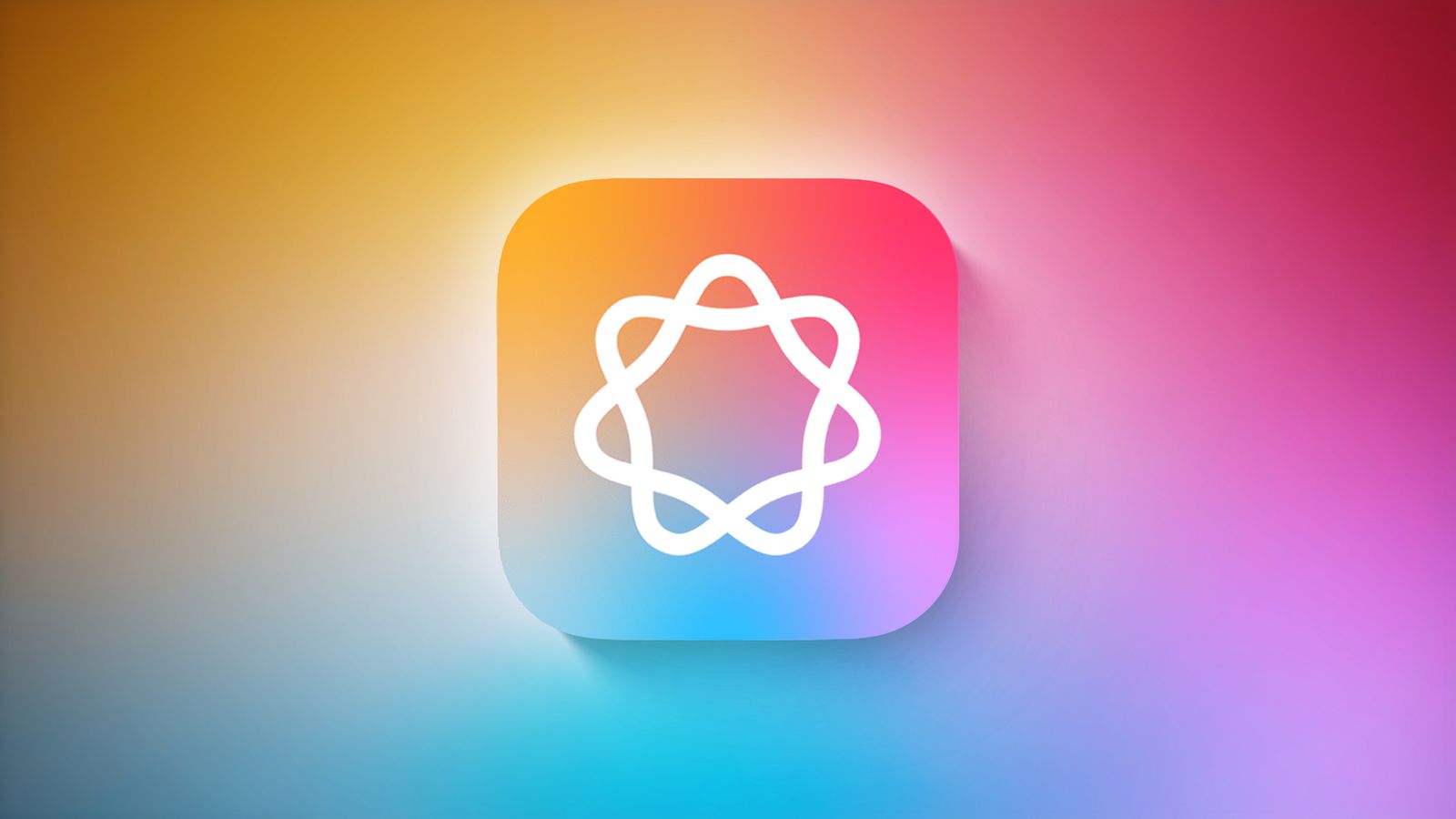
💡 Note: When talking about AI in this document, assume that we’re talking about Apple Intelligence—not Artificial Intelligence in general.
Apple Intelligence’s availability & expected timeline
As of writing this post, iOS 18.1 is out supporting early AI features, while 18.2 is in beta and expected to be released for the public sometime in December 2024. Since June, Apple Intelligence’s features have been slowly rolling out throughout intermediary versions of iOS (18.1, 18.2).
Country & language support:
- US English is supported everywhere except EU/China
- Localized English coming in December
- French support is planned for the end of the year (as of writing, any AI features try to work on french content but mostly fail),
- Europe should get AI features in April 2025
Hardware support:
- iPhone 15 Pro, 15 Pro max
- iPhone 16 lineup, both standard and Pro
- Some iPads (we’re not sure which ones exactly)
- M macs with 16gb of RAM or more
(It’s likely other hardware will not support AI features).
Apple Intelligence impact on Push Notifications
Marketers should keep in mind that, by deeply modifying the end-user experience and applying AI-driven decision to various modes of push notifications delivery, Apple Intelligence will likely force us to rethink our collective approach to mobile push conversion rates & analytics.
Summaries
iOS/macOS will summarize long notifications and notification groups, displaying this specific icon to indicate that content has been summarized:

Exemple of a Before / After summarized notification:
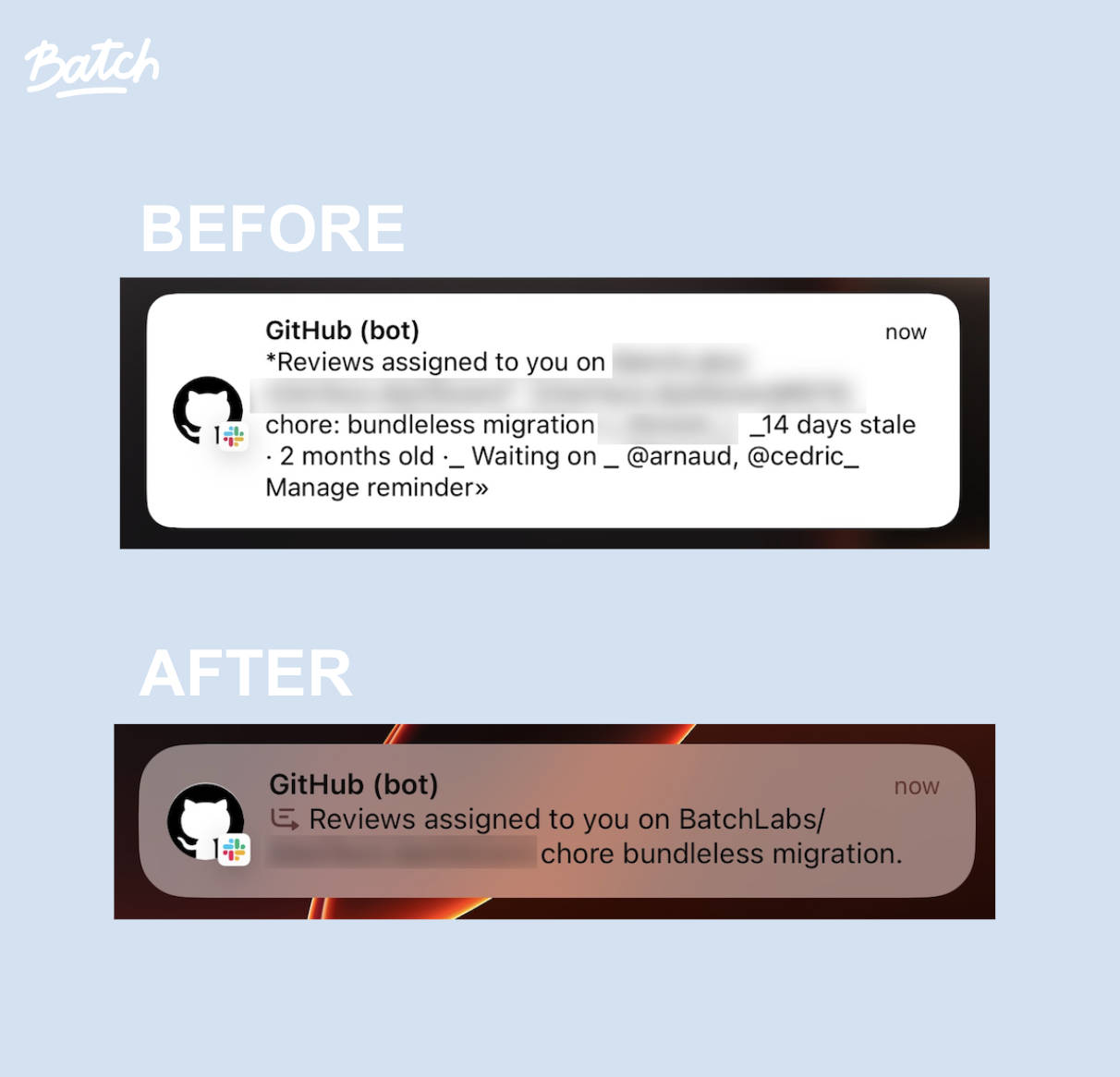
According to our analysis, what triggers notifications to be summarized is not yet documented. So far, it seems to be done depending on whether AI thinks it should be summarized or not. We don't know if/when Apple plans to document this behavior.
Also, notification groups also tend to be summarized—but not always.
Here's an example:
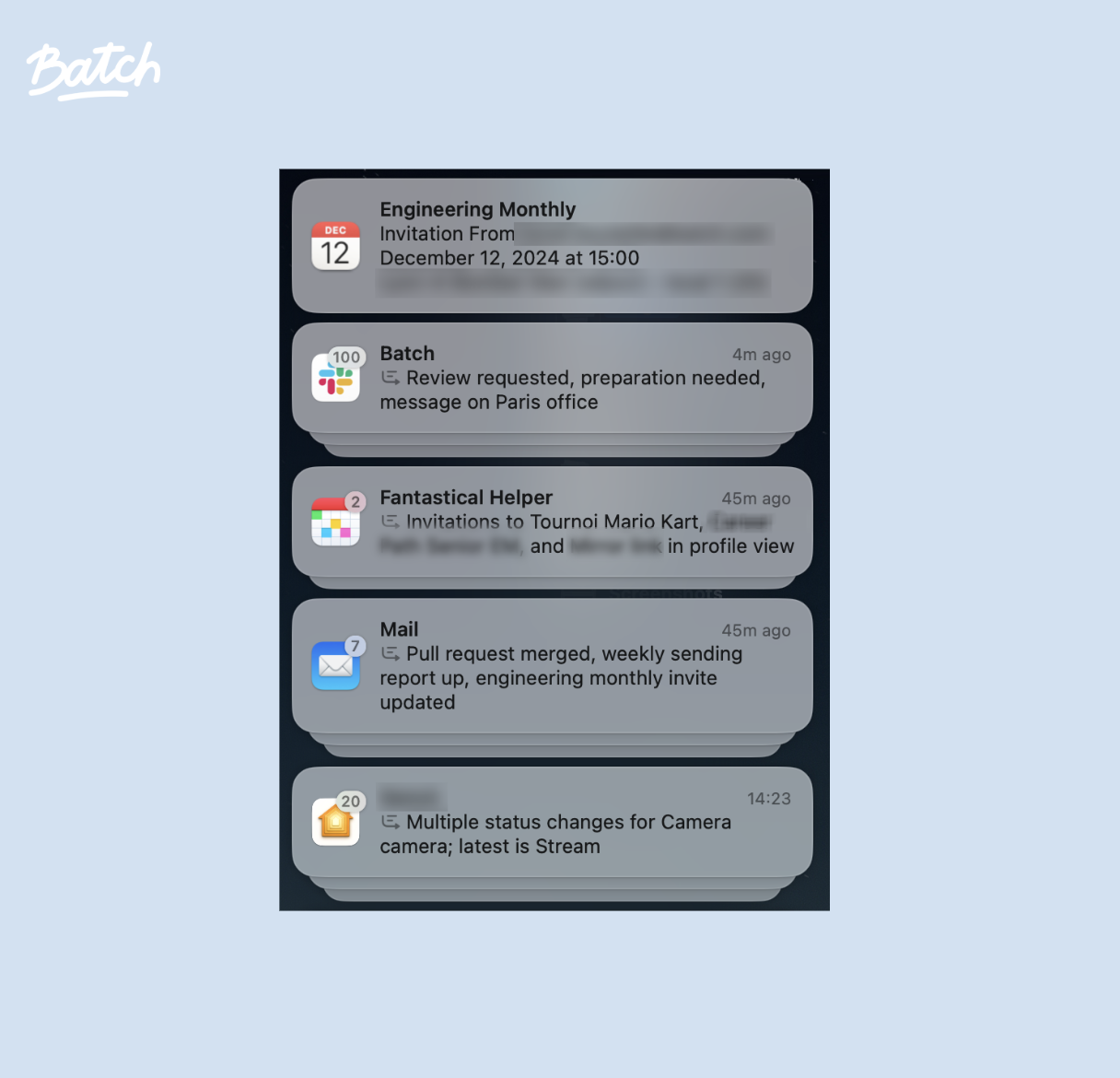
This is a macOS screenshot, but iOS works similarly
Once expanded, you will see the detailed notifications. In some cases, those notifications can be summarized themselves if they’re too long.
Summaries of summaries. Wohoo!.
💡 Note: We like this feature, but our analysis also showed a lot of wrong summaries when it comes to short content—of the likes you may have seen on social media. While AI doesn’t seem to hallucinate much, it will get stuff wrong, making the feature difficult to trust for now.
Summarization works better with longest the content, which means it’s more effective with e-mails than notifications or text messages for now.
Here's a recent lockscreen example: notifications are ordered by date. Summaries did not kick in, except for grouped notifications.
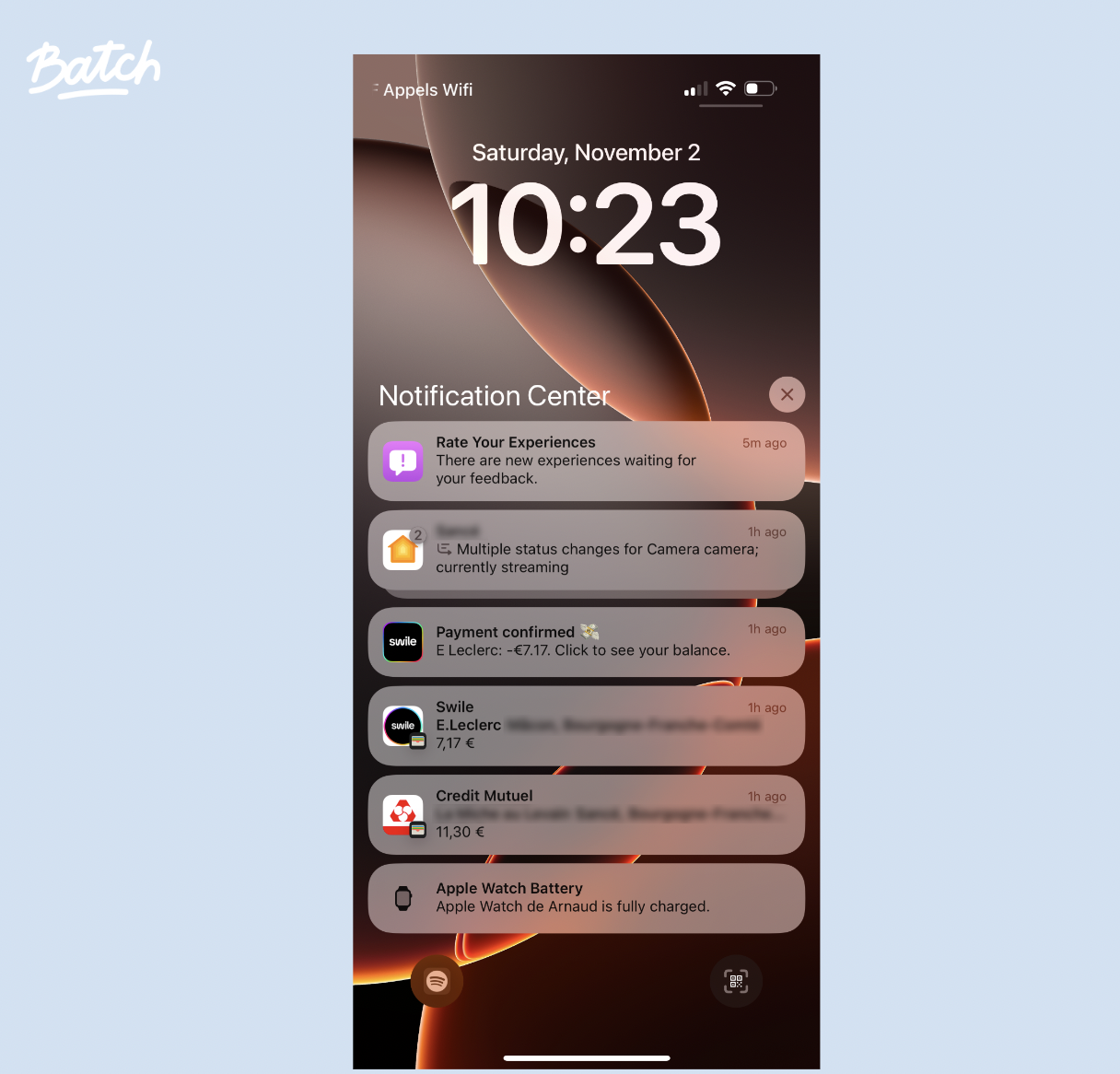
Groups
Even though groups are now summarized, how grouping works has not changed:
- Notifications are never grouped across app category; for example, you will never see a WhatsApp/Signal/Messenger notifications collapsed under the same group.
- Apps can provide a “grouping identifier” that allow an app to display multiple notification groups. This is used mostly by messaging apps to group their conversations separately, but news apps could use this to separately group notifications for separate ongoing events for example.
Users can change this and force all of an app’s notifications to be in a single group.
The one thing that changed is that notification groups now have a count on the app icon, showing how many notifications are in the group.
Ordering
For now, notification groups are still ordered from latest to oldest. Our analysis hasn't found clues of an "intelligent ranking" behavior for example.
That being said, Apple has teased Priority Notifications but either it hasn’t shipped yet—or we didn't manage to trigger this behavior.
It should look like that:
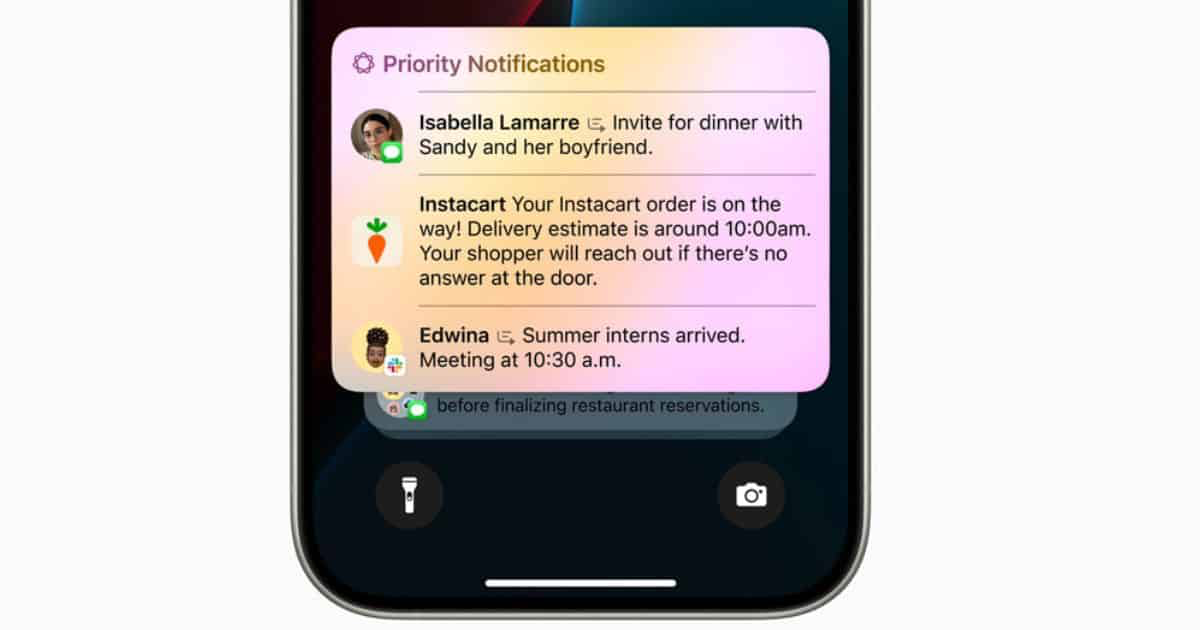
Focus Mode
This one is hard to explain. Focus Mode on iOS is a powerful but complex feature.
With Apple Intelligence, a new focus mode has been introduced called Reduce Interruptions.
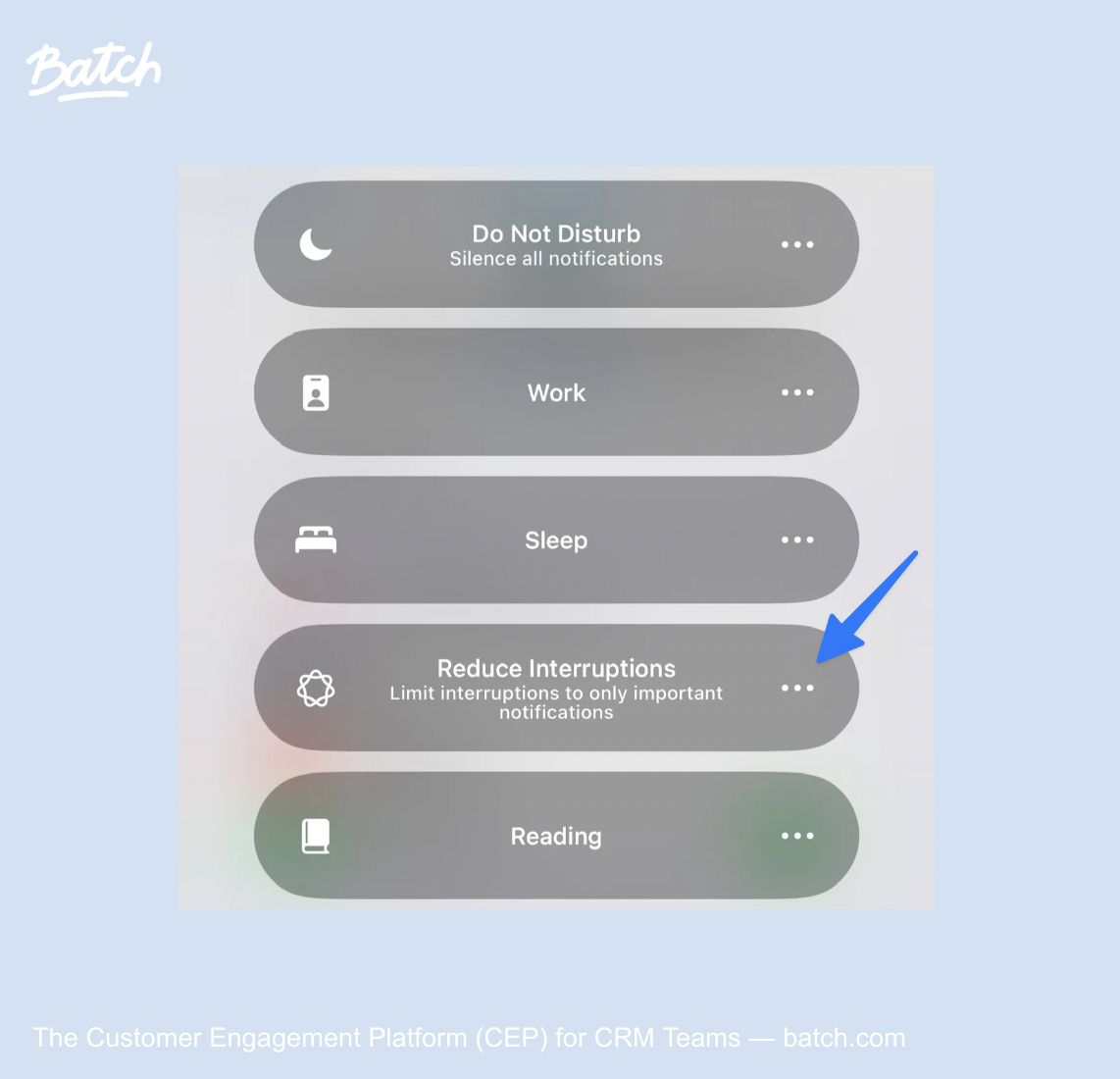
Reduce Interruptions works pretty much like Do Not Disturb with the notable exception that it will use AI to decide which notifications go through and which don’t based on the notification content whereas standard DnD works with a inclusion/exclusion list of people/apps.
Reduce Interruptions does what it says: you will still see notifications, simply way less.
You can still override some people/apps to always/never go through and you can enable this feature on any Focus mode.
Time Sensitive notifications, which are not new to iOS 18, bypass this filtering by default. Apple offers some documentation about what “interruption” levels are and how they work.
Applications have no other way than “Time Sensitive”/”Critical” importance to bypass focus modes and even then users can revoke that app’s privileges to send such notifications.
The only way they can try to circumvent the OS is by making their content look urgent and we bet Apple has undocumented safeguards in place to prevent abuse.
For example, we tried enabling for Work Focus:
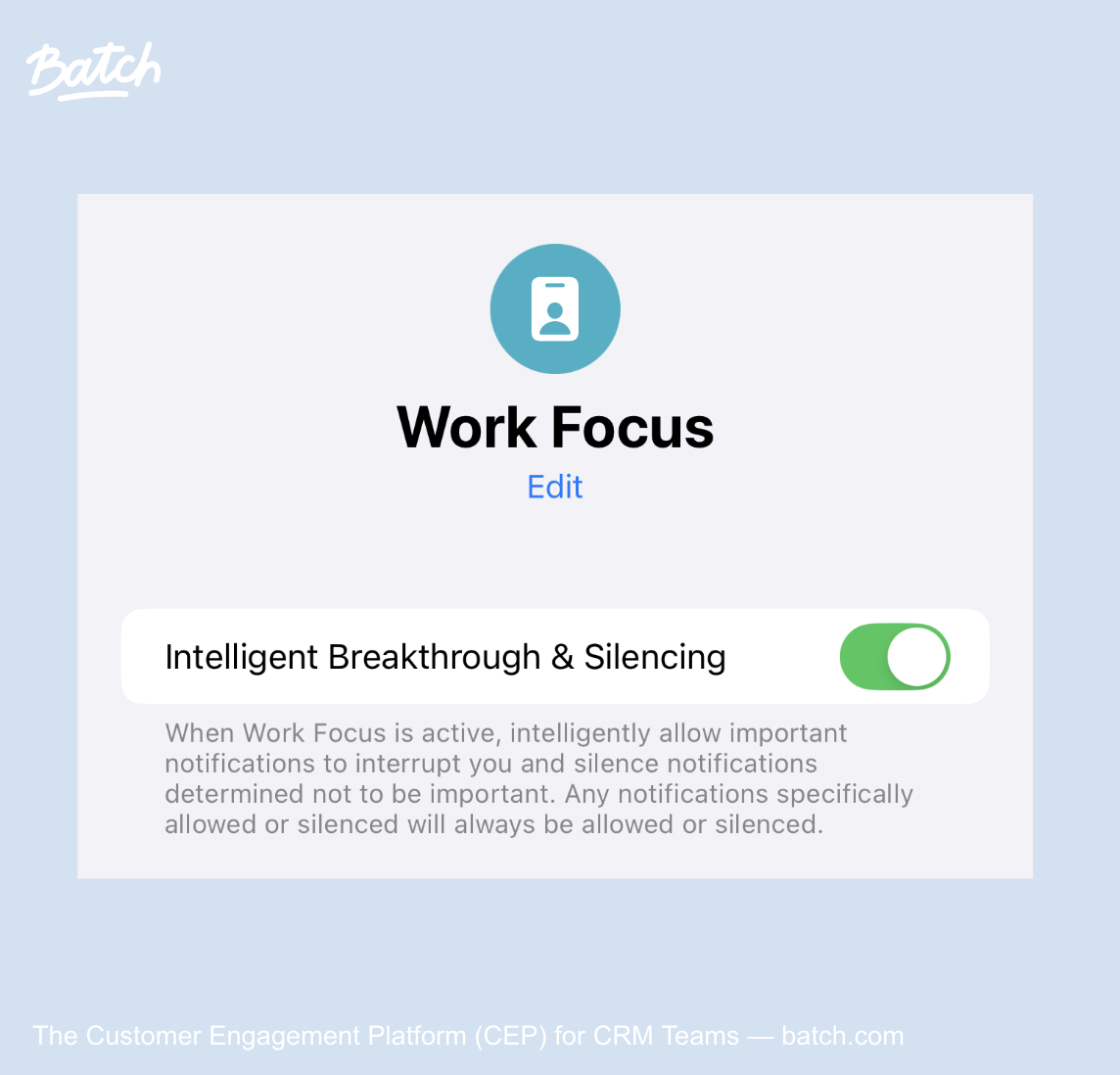
This mode introduces aditionnal complexity in what notifications will do when received:
Notifications will show up directly on your Always On Display (AOD), but won't wake up the lock screen. (Note: we don’t know what it does if you have disabled AOD).
Some notifications are completly filtered out: some are delivered once you exit the focus mode, or just like other focuses, they get into a “While in XXX Focus” group that is hidden by default but shows up if you swipe up on your lockscreen to see notification history:
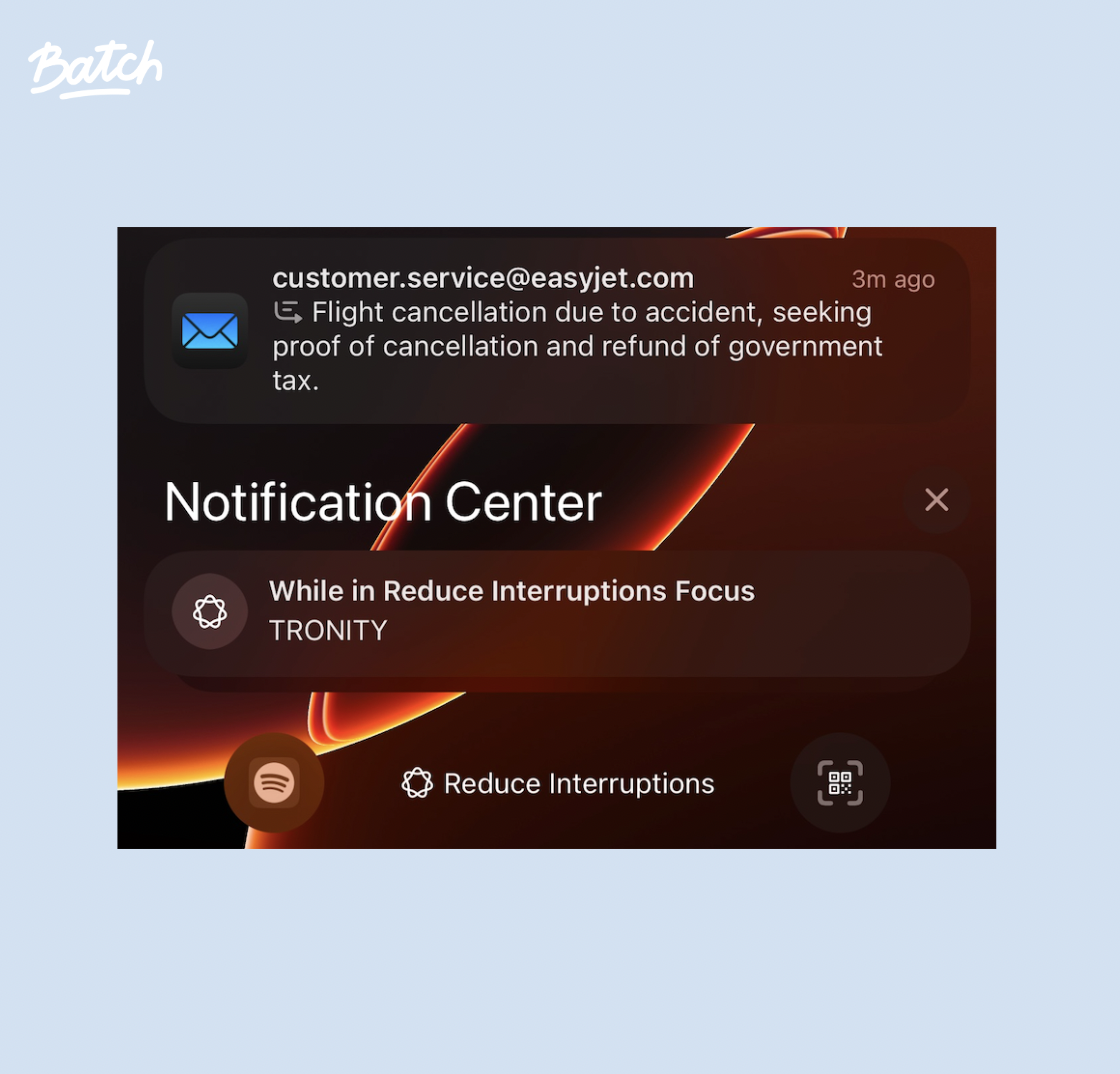
💡 Note: iOS has a Scheduled Notification Summary feature which does not interact with Focus Modes at all. They will get grouped and delivered later on their own conditions, independently from DnD or Reduce Interruptions. Nothing changed here.
Some notifications are deemed “Maybe important”. Our experience is that this is exclusive to conversational notifications: ones that usually are associated to a person (displaying their avatar on it) or Calendar items. It’s not limited to system apps and can work with Signal, Slack, etc.
We’ve never seen that on notifications from Uber Eats, even though I had some messages like “your order ran into an issue” and we're pretty sure Apple has some hidden conditions for this to work so that applications don’t try to all break through the focus mode and be marked as important.
They get some extra stuff:
- They get a MAYBE IMPORTANT badge
- They temporarily get an animated colored glow (video below).
💡 Note: we like this feature a lot as we tend to leave the focus mode on all the time.
Apple Intelligence impact on Email
With interesting changes affecting the whole user experience, it's likely that Apple Intelligence will have marketers rethink how they approach email deliverability for the whole Apple ecosystem.
Summaries
Similar to push notifications, Mail can summarize emails. Summarized content will be highlighted by the same icon.
There are three places where we found the feature:
Inside notifications:

In the mail list:

In the mail view, when taping the Summarize buton:
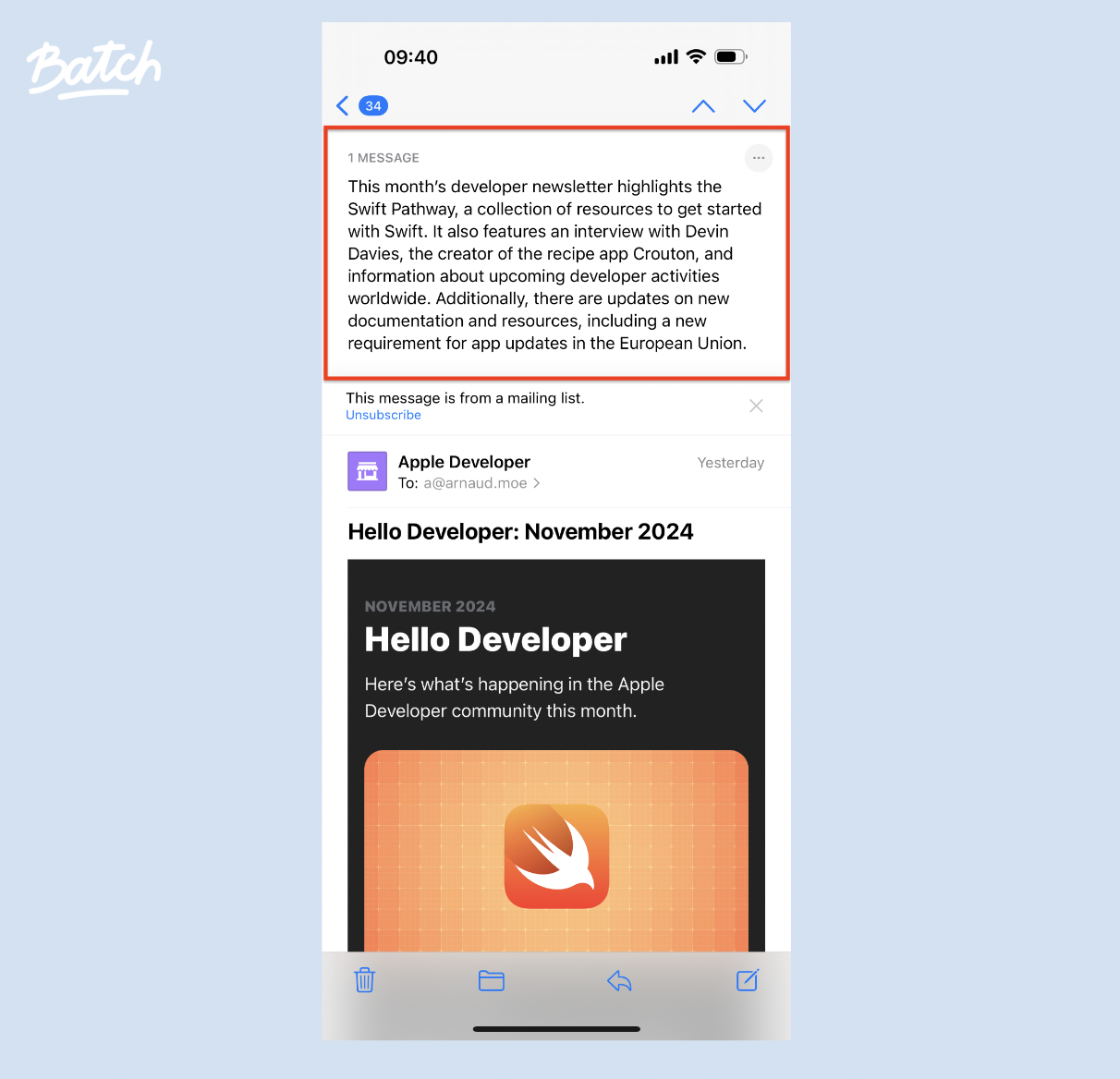
Summaries in emails may suffer from a lot of the same shortcoming as notifications, but in our experience, they work much better. We've been using this for months and it has been awesome, especially on the Mac. While we never manually ask to summarize an email, notification/list summaries are awesome and they're missed a lot when back on Gmail’s web UI.
Priority
Apple Mail has a new Priority category that tries to show very important emails on top of the list.
In our experience, there's is no way for companies to send any signal to priorize an email as AI will ranks the email based on its content.
For the time being, those emails don’t get special notifications—but they get a spot in the mail list:
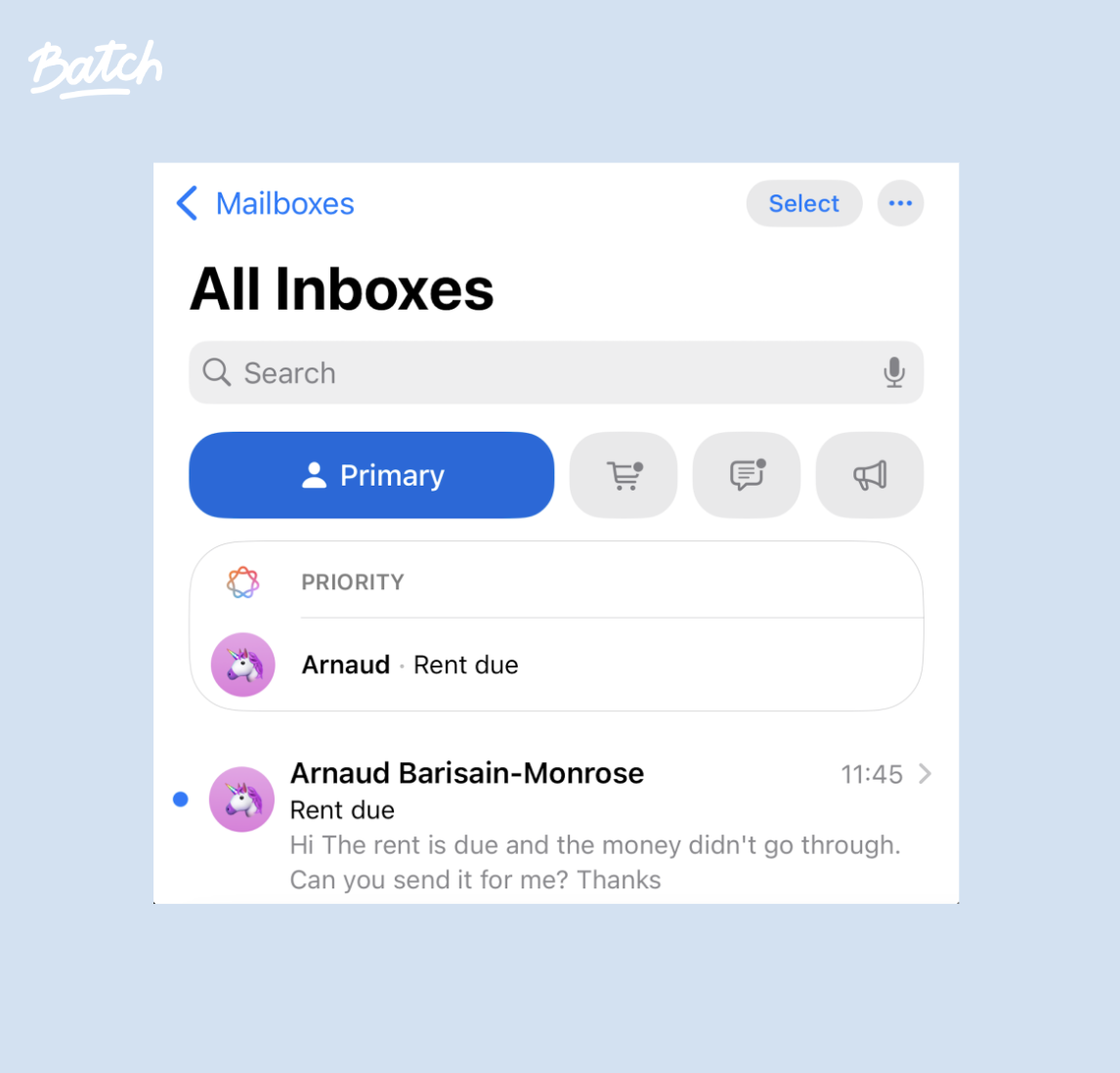
Note: I've paid my rent ✌️
Categorization
This one is especially interesting for marketers aware of email deliverability challenges and whether emails end up in customer’s mailboxes or not. It is not directly related to Apple Intelligence, so feel free to skip this.
The mail app is now divided into categories, by default, marking the first major change in the Mail app since iOS 1, and the mail list also shows icons linked to specific senders.
The categories are similar to what Gmail has been doing for a long time now. Tabs with unread mails show a little dot when they have unread content in them. The good part is that it works across all of your mailboxes, as long as you added them for the app. GMail, Google workspace, iCloud, Fastmail, etc. as long as Mail supports it, the mails get grouped.
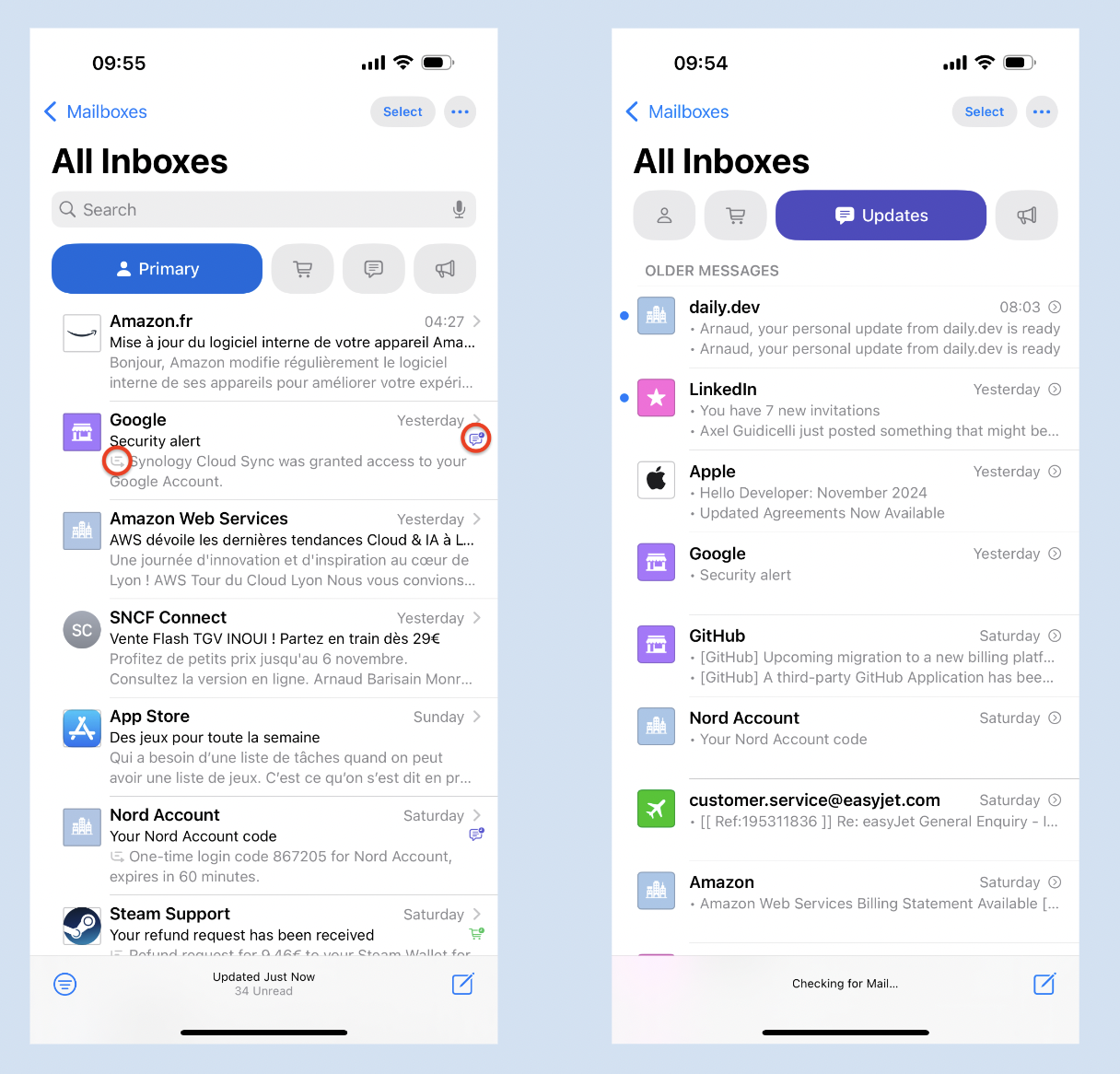
However, mail from the other categories can pop up in primary if iOS deems them important: see the “Google Security alert”, which is under updates but showed up in Primary. A little icon on the right side shows that it belonged in another category.
It also shows up on the mail itself:
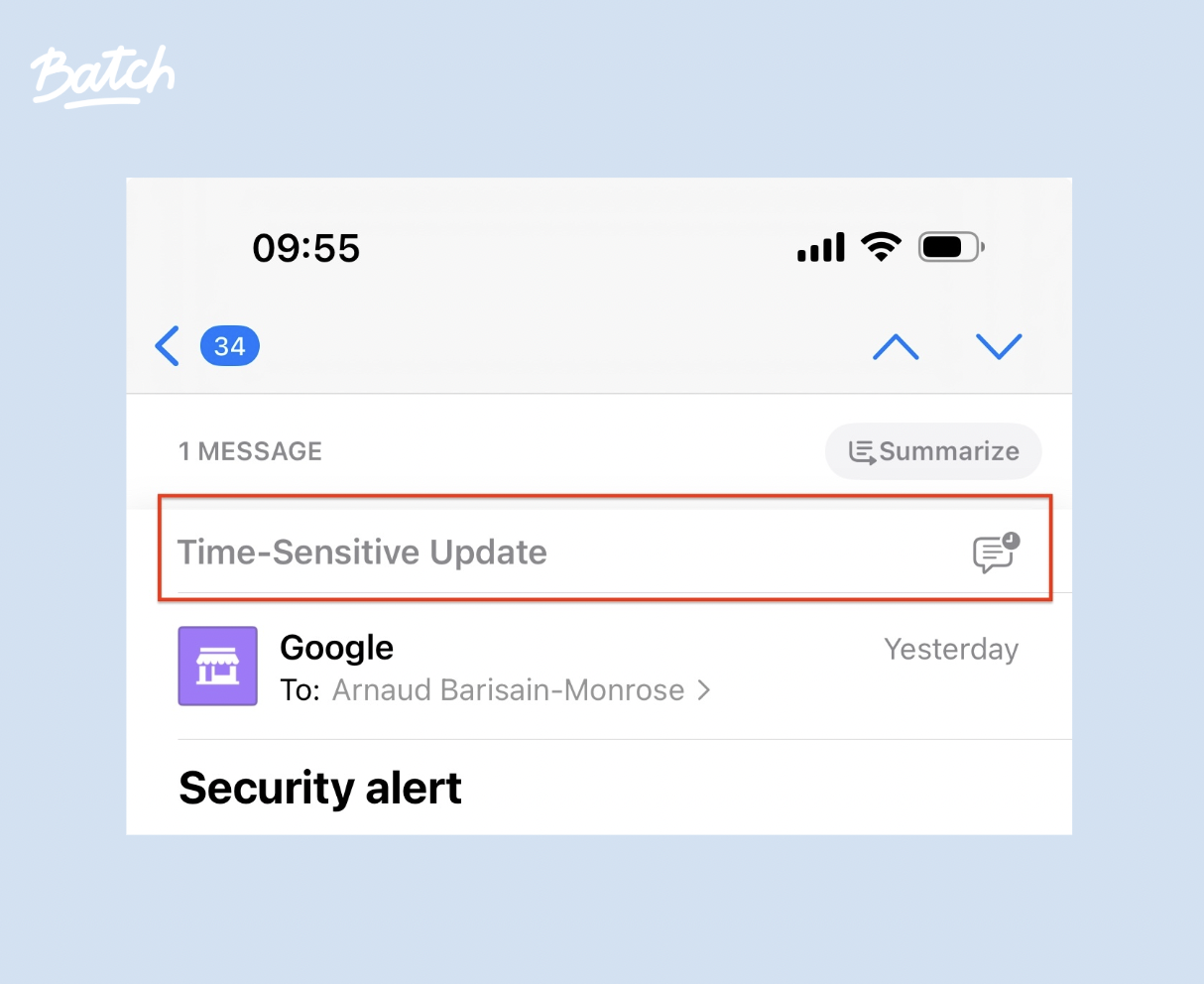
Tapping on the already selected tab shows an “All mail option” that is exactly what it says:
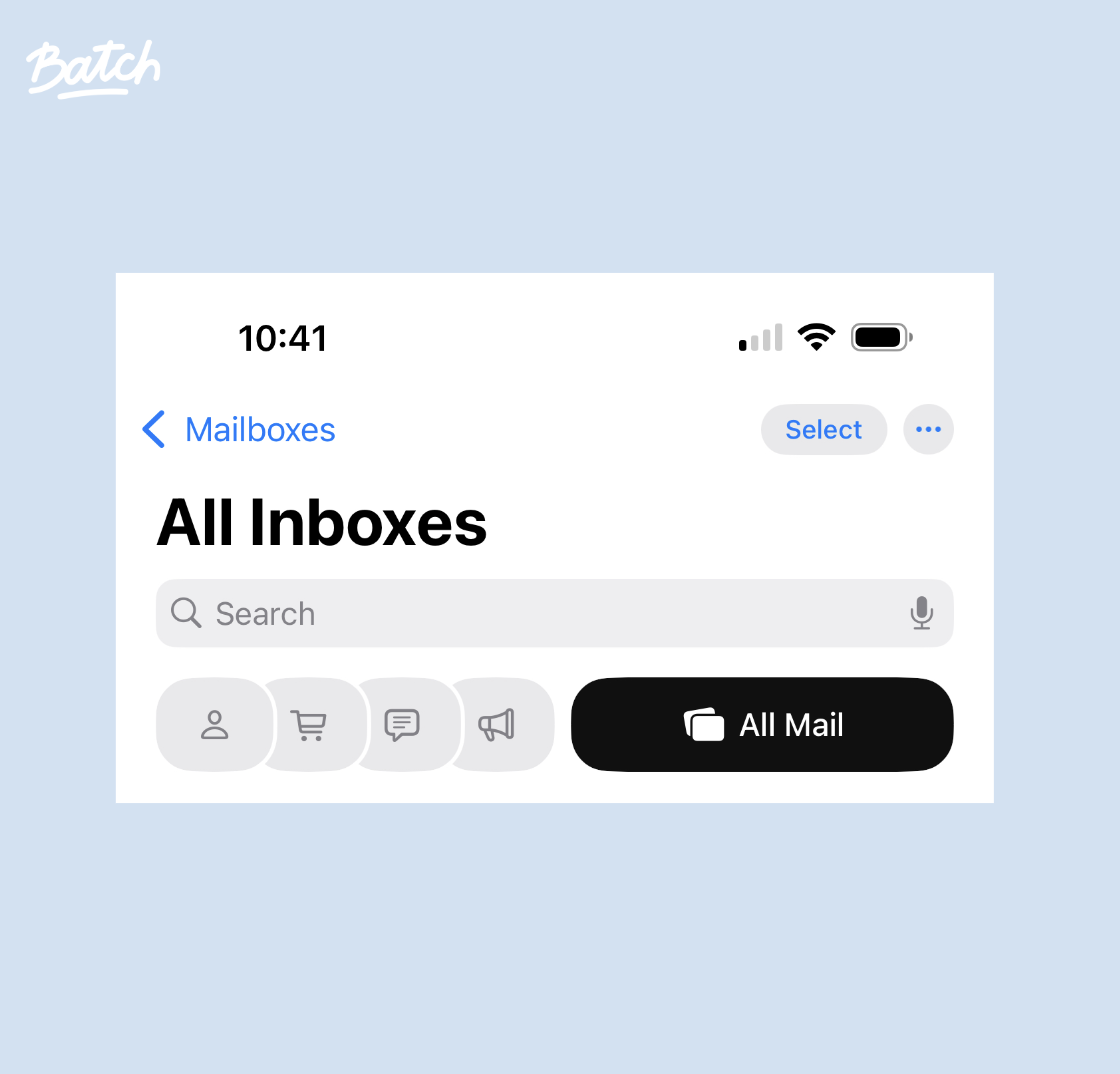
And reverting to the standard list is two taps away:
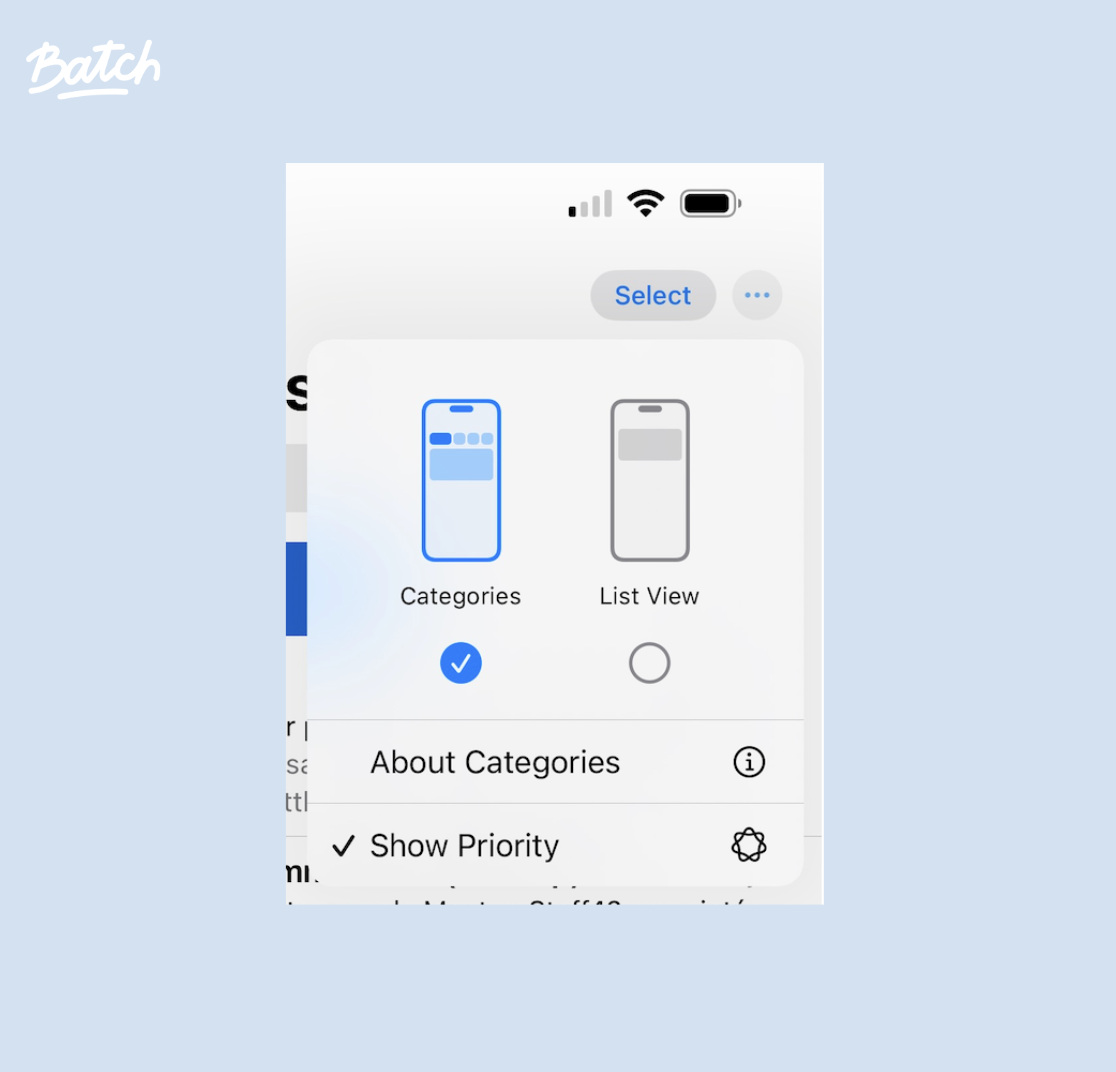
When using a categorized inbox, mails are grouped by sender and tapping on them shows a new UI:
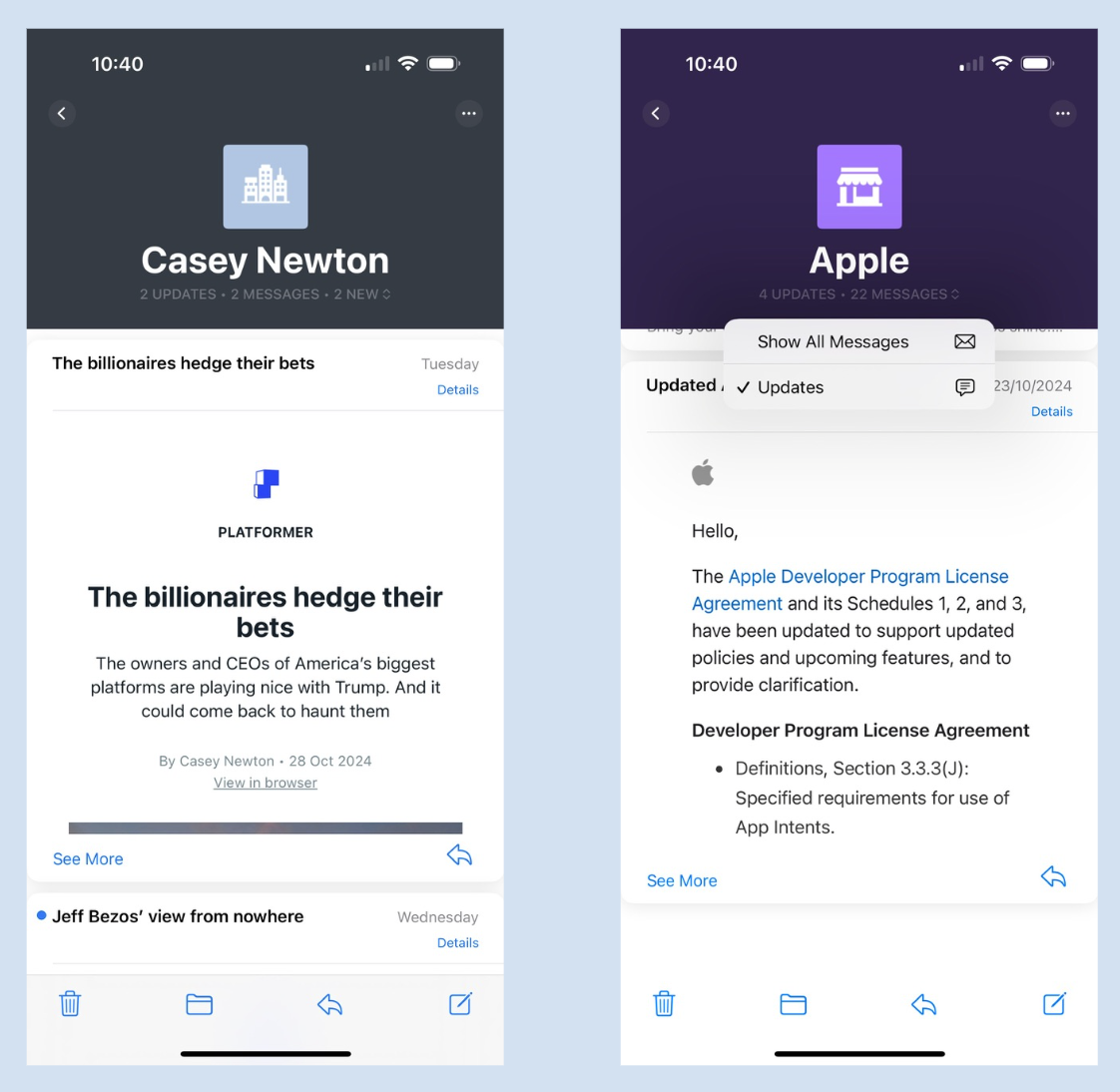
Lastly, any wrongly categorized email can be reassigned by the user:
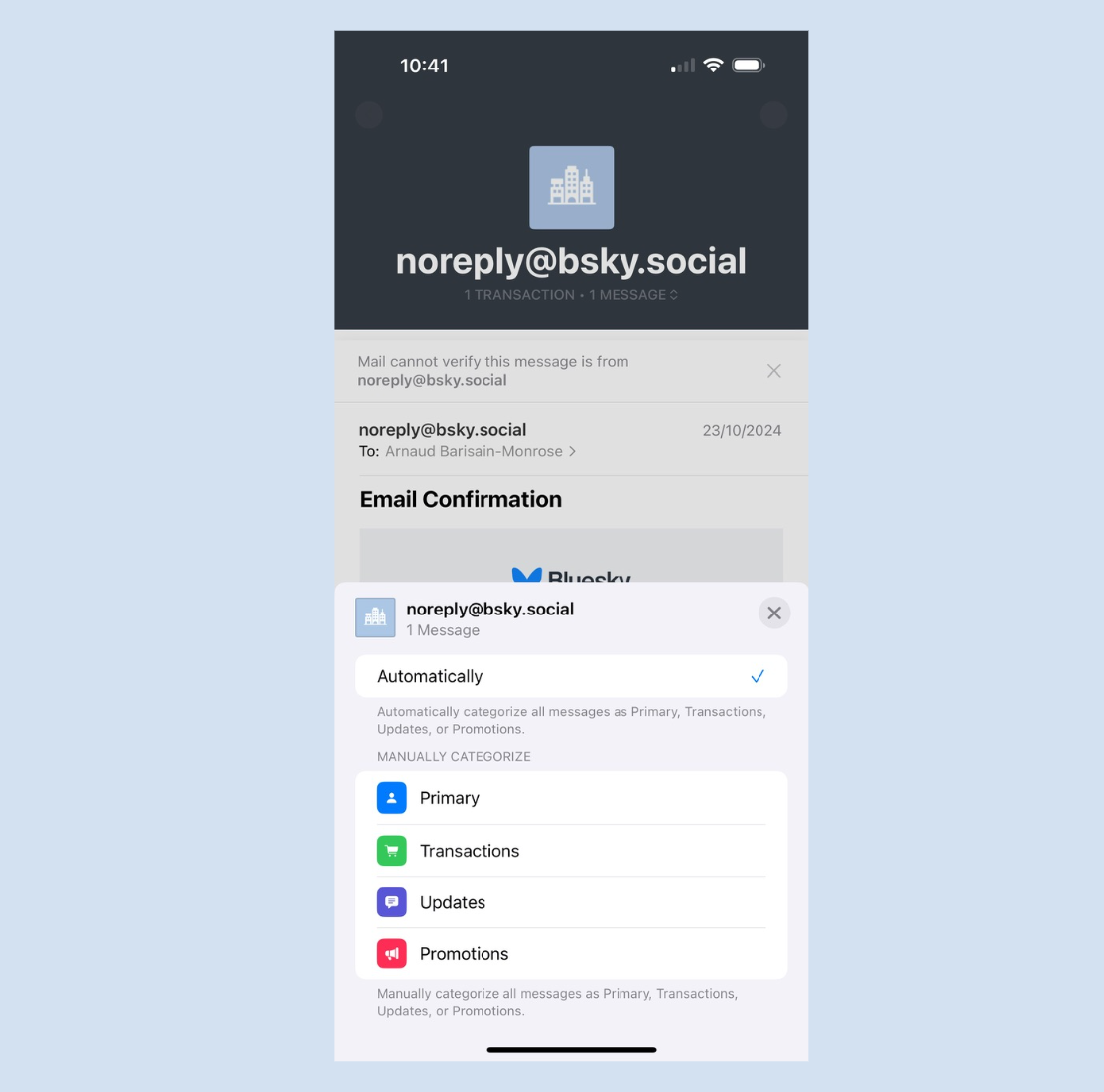
Email Notifications
Now this categorization changes how notifications work. If you’re familiar with the VIP system, you know that Mail allows to have more granular notification settings, for example allowing email notifications for specific people.
Now, just like Gmail, you can configure your Primary Inbox to notify you and turn off other notifications.
The Mail badge will also now show the Primary inbox by default.
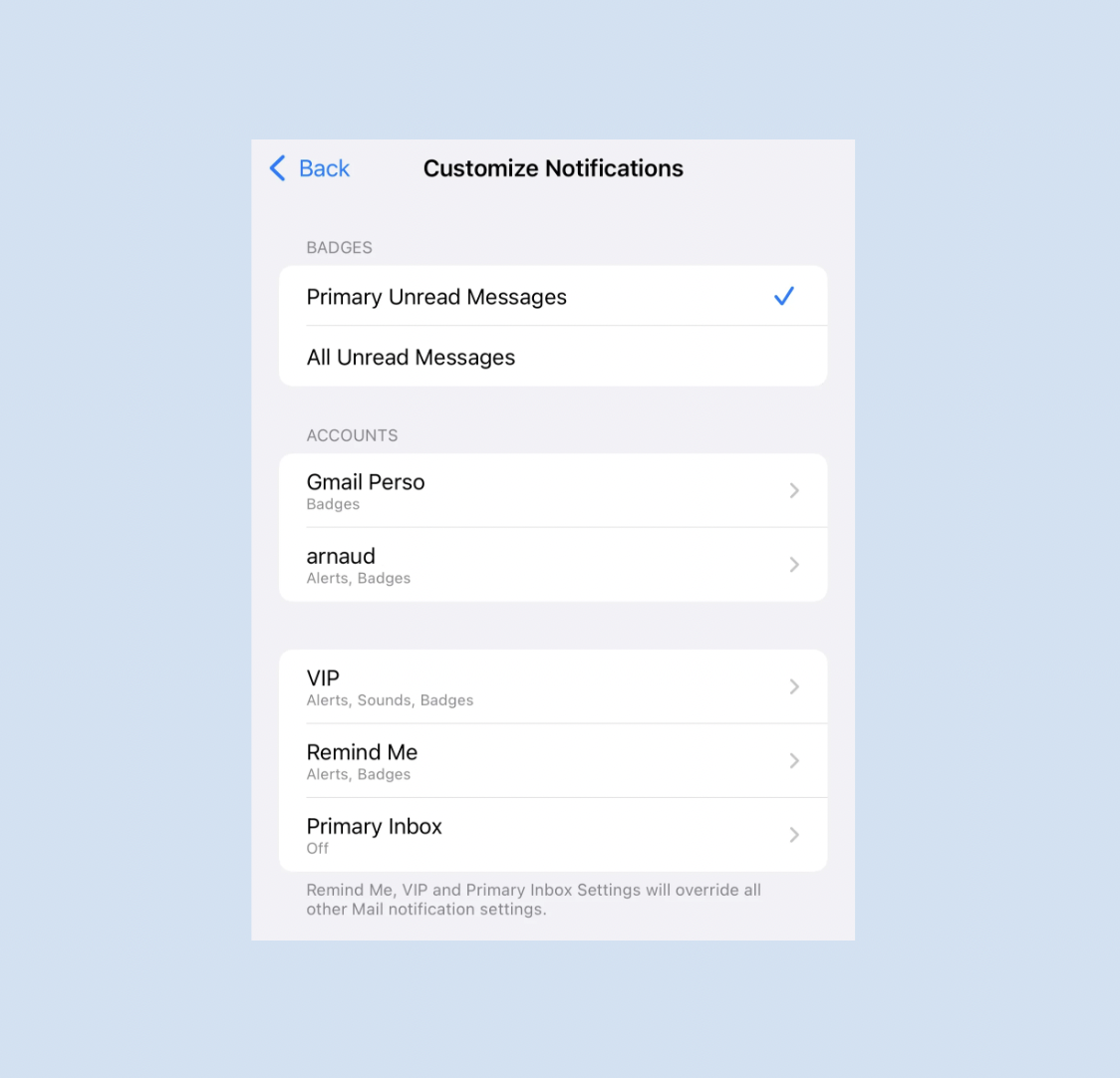
Ready to try Apple Intelligence yourself?
Well... it's annoying 😅
You will need:
- A non-EU AppleID, currently logged in the App Store app (This is not the iCloud account, they’re separated).
- Your phone must to be set to English (US/UK)
- Siri itself must be set to English
To keep in touch with our team and receive more news like this one, subscribe to our newsletter or contact us!
Arnaud Barisain-Monrose
Staff Engineer